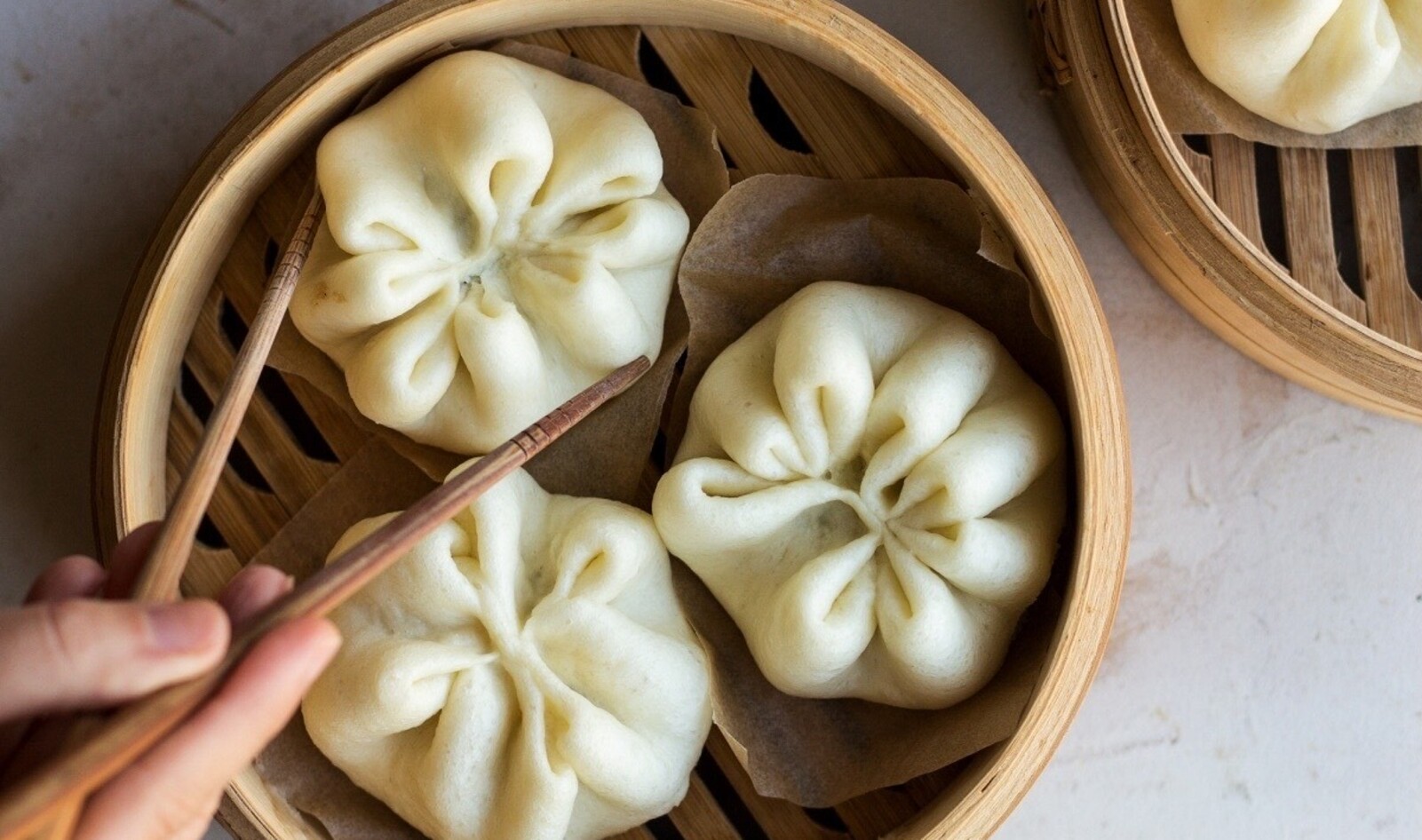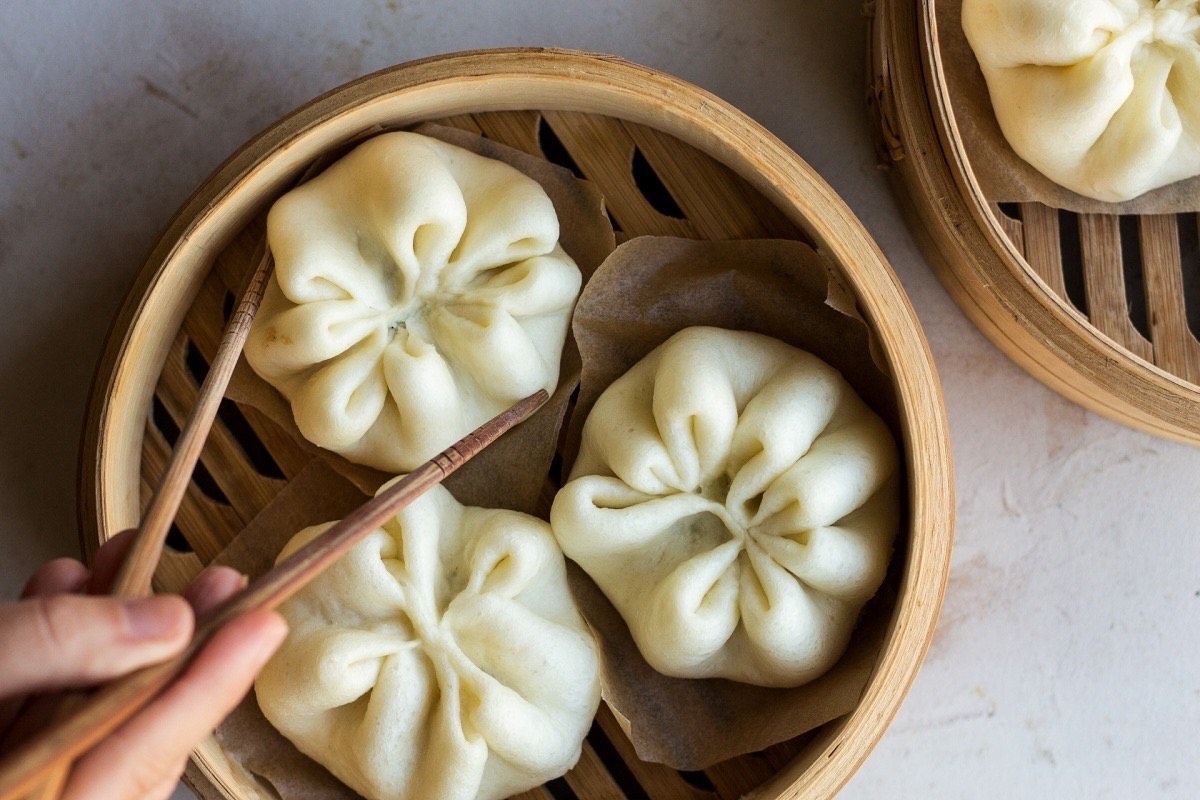Every year or so, a new kitchen appliance becomes the “it” gift. Food culture has obsessed over Instapots, air fryers, and pizza ovens, and while these gadgets have their uses, we’re bringing it back to the basics. Like, 5,000 years ago basics, according to Irvin Lin of Serious Eats and other food historians. The humble bamboo steamers—or early adaptations of it—has been around for thousands of years, and like today’s modern cooking tools, its uses are incredibly versatile.
Whether you want to heat up frozen vegan dumplings or savor a basketful of perfectly steamed vegetables, here’s what you need to know about bamboo steamers.
Choosing the right bamboo steamer
A bamboo steamer is fairly straightforward—you don’t have to worry about buying the best, most efficient, or easiest-to-clean brand. They all reliably perform the same function.
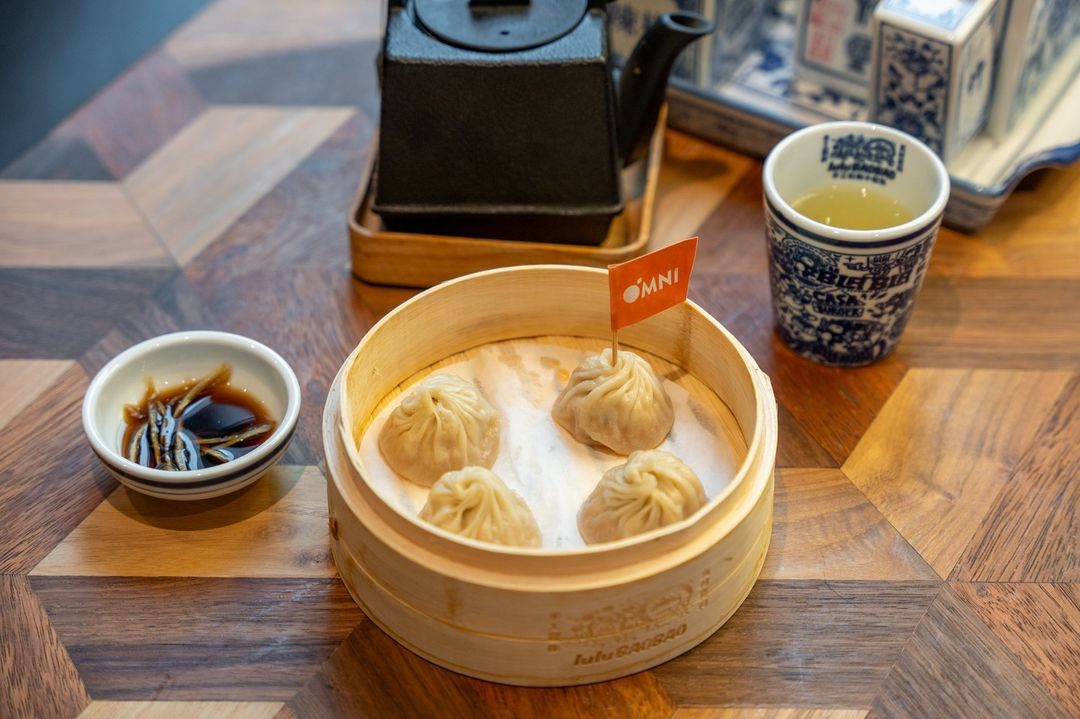 Omni Foods
Omni Foods
The main differentiator between steamers is the size. Bamboo steamers can range in diameter from six to over 14 inches and come in multiple tiers. For most home cooks, Margaret Egby of Food and Wine recommends a 10-inch, two- or three-tier model. You want a steamer that will fit in a skillet with room to spare; so, if your largest skillet is only 10 inches wide, you may want to downsize to an eight- or six-inch steamer.
You can find bamboo steamers at a variety of homegoods stores including Sur La Table, William Sanoma, and most department stores.
How to use a bamboo steamer
This appliance isn’t automated, but that doesn’t mean it’s not easy to use. We learned the basics from the Leung family, the homecooks behind The Woks of Life. “Steaming is not only a great way to cook food, it’s also a great way to reheat. Because steaming reintroduces moisture into food, it can be a great way to make your food fresh once again,” they write on their blog.
Before you start steaming, you’ll need water, parchment paper or breathable material to line the steamer with, and a wide, shallow pan that is slightly larger than your steamer.
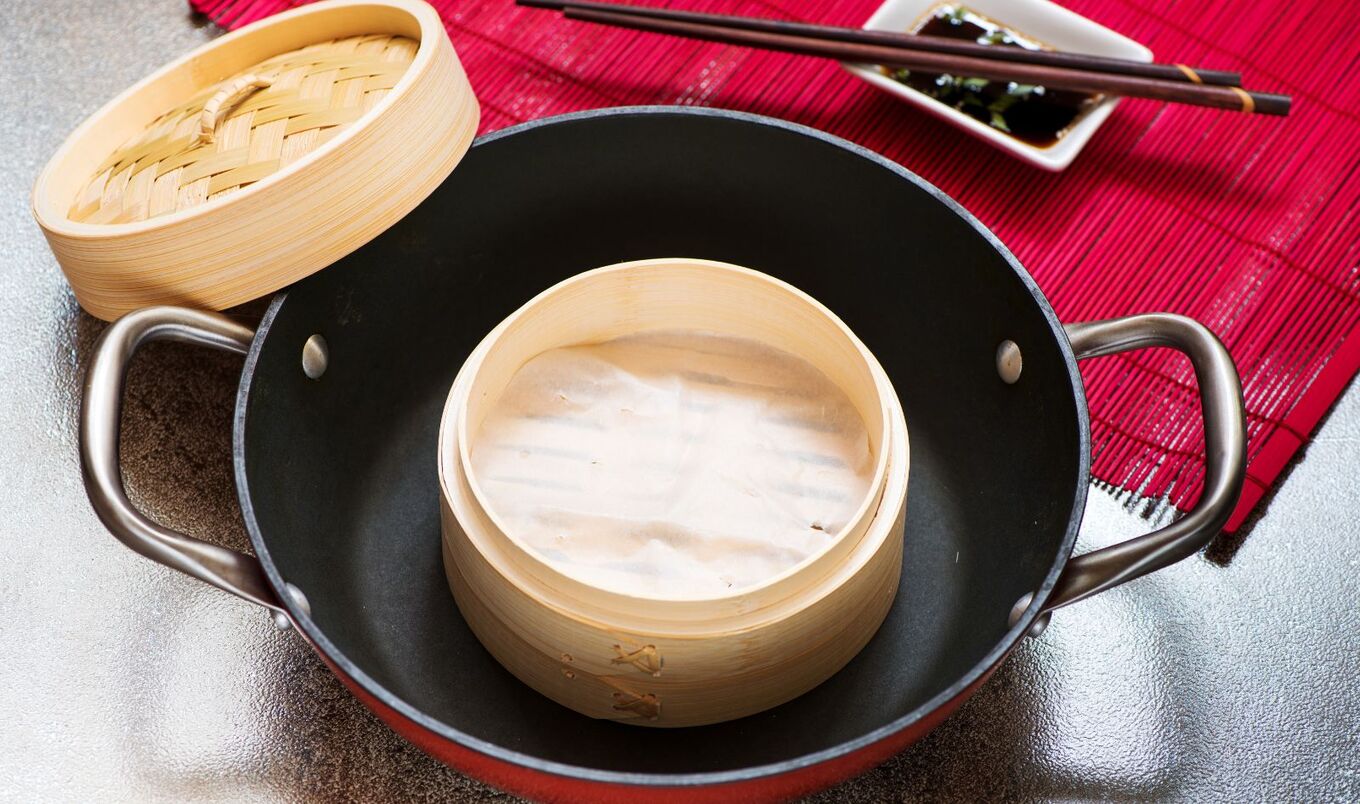 Getty
Getty
Once your food is prepped and ready to start steaming, lightly simmer some water in the pan so the water level covers the bottom ½ inch of your steamer. Essentially, you want enough water to prevent the bottom of the steamer from burning, but it should not be so high as to reach the first level of your steamer (and therefore waterlog your food).
Before placing the food into the steamer, you’ll need to line the surface to prevent sticking. Parchment paper works well, as do more natural items like wide cabbage or lotus leaves. In a pinch, you can even use cupcake liners if you’re steaming dim sum like bao buns or dumplings.
Place the food on the liner and make sure the top of the steamer is closed. Most foods steam relatively quickly—less than 15 minutes—so keep close and top off the water in the pan if the level gets too low or you notice any scorching on the bottom of the steamer.
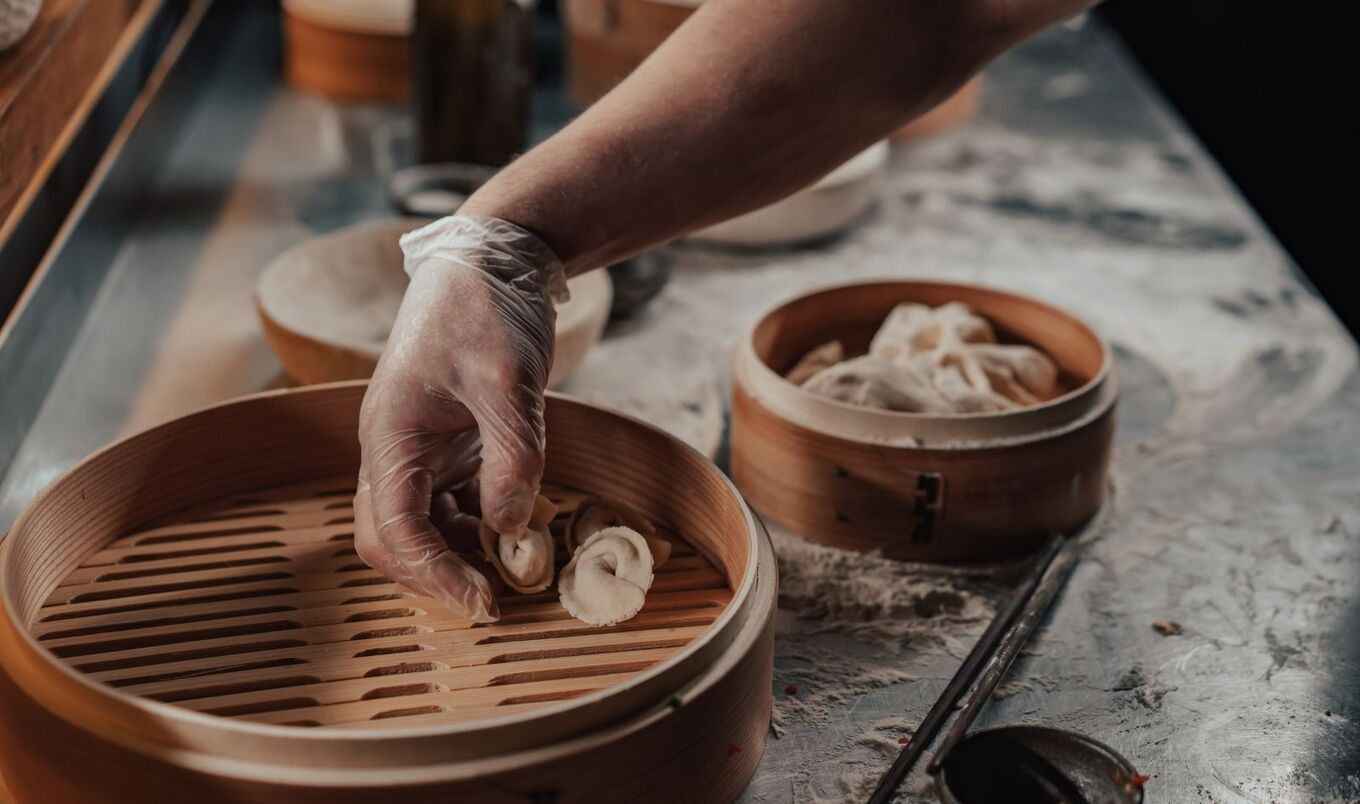 Canva
Canva
BECOME A VEGNEWS VIP: Get exclusive product deals, freebies, and perks galore!
When you’re ready to remove the food, turn off the heat on the stove and carefully transfer the steamed items onto a plate or serving dish using chopsticks or another utensil. The food will be extremely hot, so avoid using your hands and curb the temptation to take a bite immediately—patience is a delicious virtue.
To clean your steamer, remove from the pan and wash with a gentle sponge and dish soap (do not leave your steamer to soak). Immediately rinse off the soap and leave on the counter for a day or two before storing—this helps prevent mold or mildew from forming.
What to cook with a bamboo steamer
A bamboo steamer may only do one thing (steam), but its uses are wide and varied. From reheating frozen foods to making dessert, here are six ways to use this simple appliance.
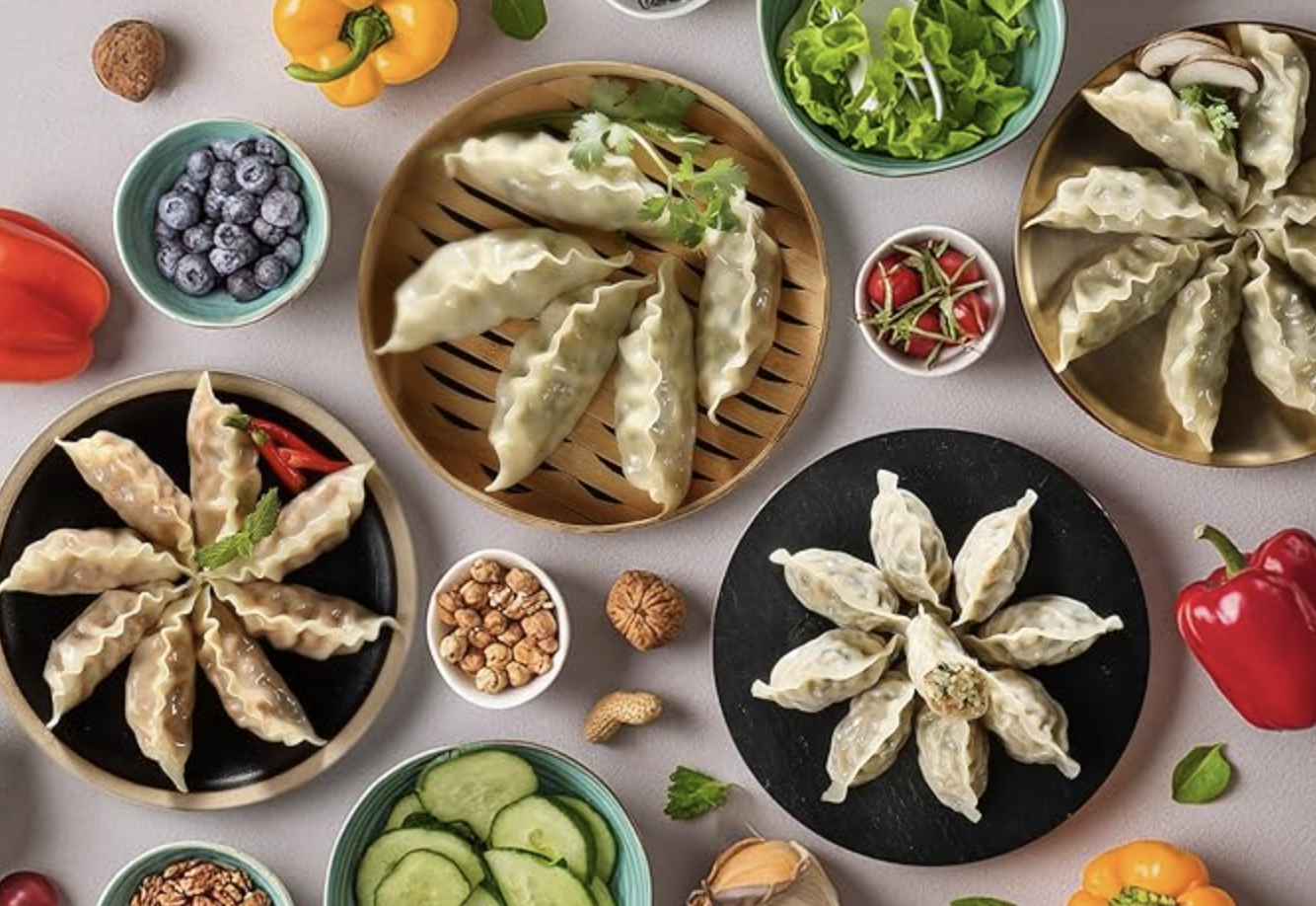 Damduone
Damduone
1 Frozen foods
For those with a freezer full of Trader Joe’s frozen kimbab, Costco veggie dumplings, or any of Omni’s bao buns, a bamboo steamer is essential. Steaming helps achieve the perfect cook and texture—something a microwave can’t get quite right. Follow the steaming instructions on the package and make sure to line your steamer.
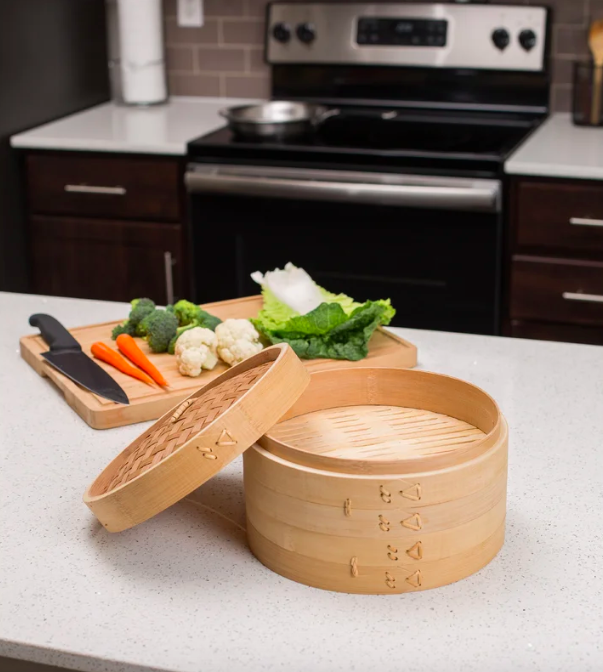 Wayfair
Wayfair
2 Vegetables
Steamed vegetables are anything but bland when cooked to the right consistency and seasoned with a simple sauce. While a bamboo steamer can cook just about anything, we love using it for veggies that can be sliced thin and cooked quickly like eggplant, kabocha squash, and bok choy. The cooking time will depend on how thick the vegetables are, but as a rule of thumb, check for fork-tenderness every few minutes and know that heartier veggies like squash, carrots, and onions tend to take longer than leafy greens like cabbage and bok choy. After steaming, drizzle with soy sauce, Korean barbecue sauce, or a nutty sesame marinade
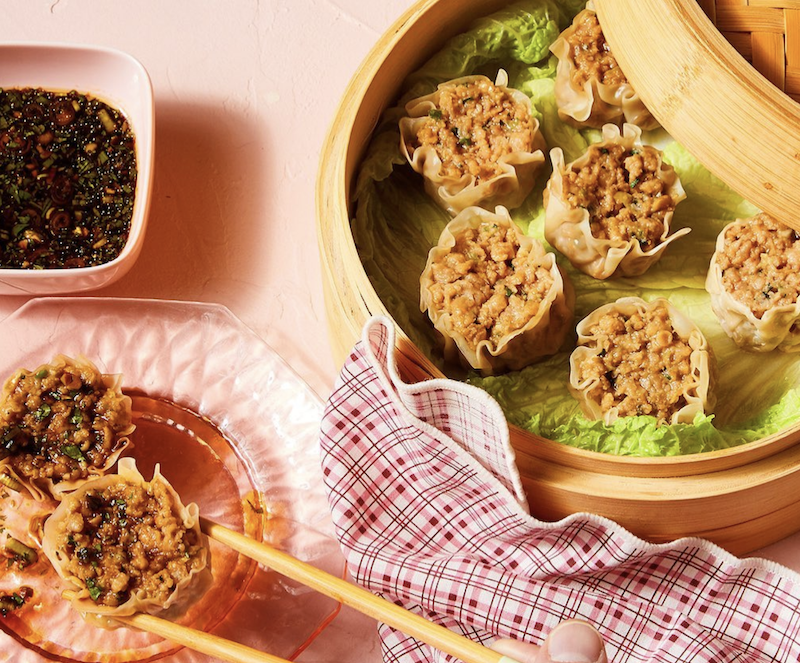 Impossible Foods
Impossible Foods
3 Dim sum
Bamboo steamers are a must for dumplings, bao buns, and xiao long bao. With a multi-level steamer, you can have several items going at once—think shumai on the top, barbecue pork buns on the bottom, and vegetable dumplings in the middle. Check out these traditional dim sum recipes or take a deep dive into the delicious variety of dumplings.
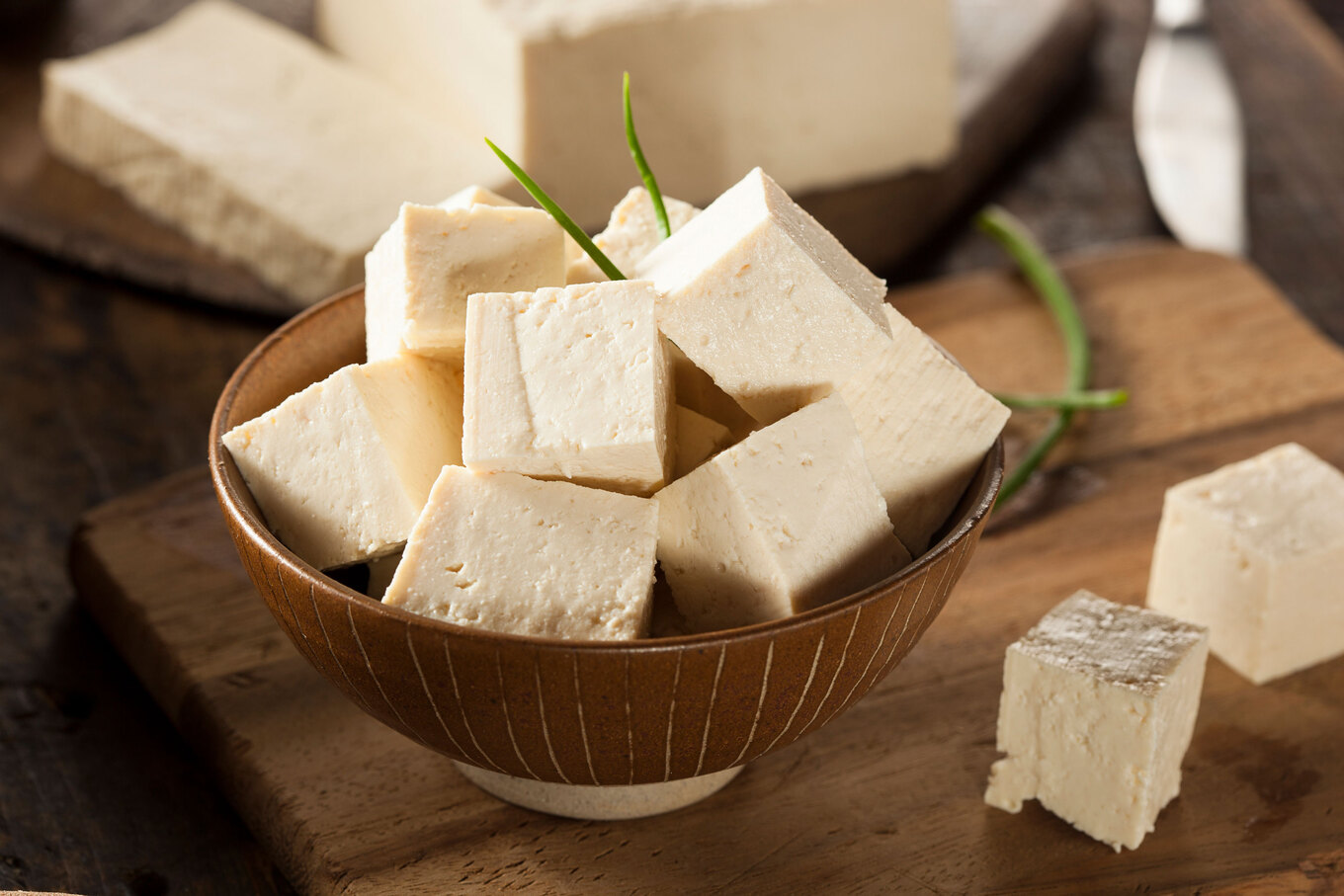 Getty
Getty
4 Tofu and other proteins
For the tofu purists, steaming tofu helps retain its soft, silky texture, ready to take on any delectable sauce you pair with it. You can steam the entire block as-is or cut into cubes or slabs (the cut tofu will steam more quickly than the solid block). Both marinated and plain seitan can also be cooked in a bamboo steamer.
5 Buns
Soft, pillowy buns with a savory filling make for an exquisite meal. Lazy Cat Kitchen’s vegan sticky pork buns are a go-to for us, but when we’re in the mood for a snack, we also turn to scallion buns. Unlike most buns, these aren’t filled; the impossibly soft, pillowy bread is truly the star of the show. The simple dough is layered with a generous portion of chopped scallions, artfully twisted into a ball, then steamed. They may look complex, but this recipe does a great job of explaining each fold, cut, and twist.
6 Desserts
Taro xiao long bao and chocolate-filled buns are popular options when it comes to steamed desserts, but you can also steam cakes in a trusty bamboo steamer. We look to the traditional Malaysian treat—ma lai go—for reference. It’s a lightly sweetened, unfrosted cake cooked entirely in a bamboo steamer. Check out this vegan recipe and try it for yourself.
For more plant-based stories like this, read:
JUMP TO ... Latest News | Recipes | Guides | Health | Subscribe

